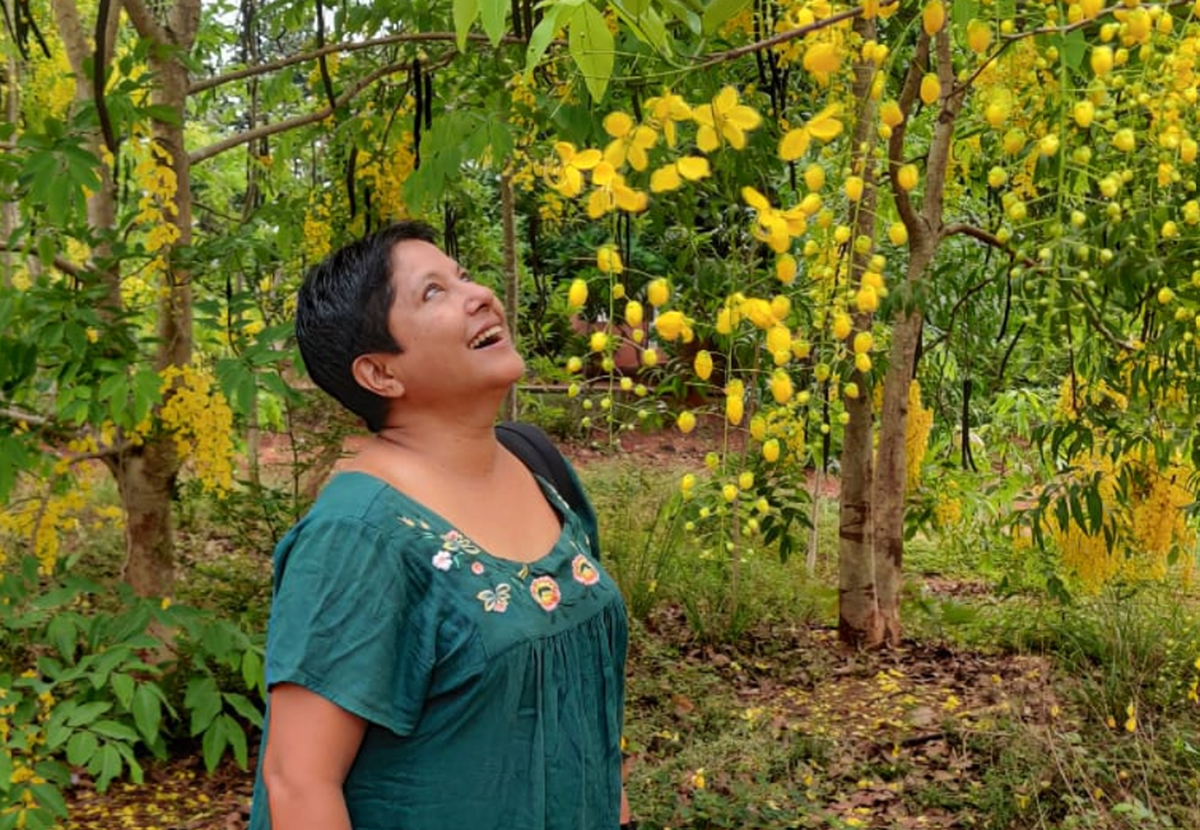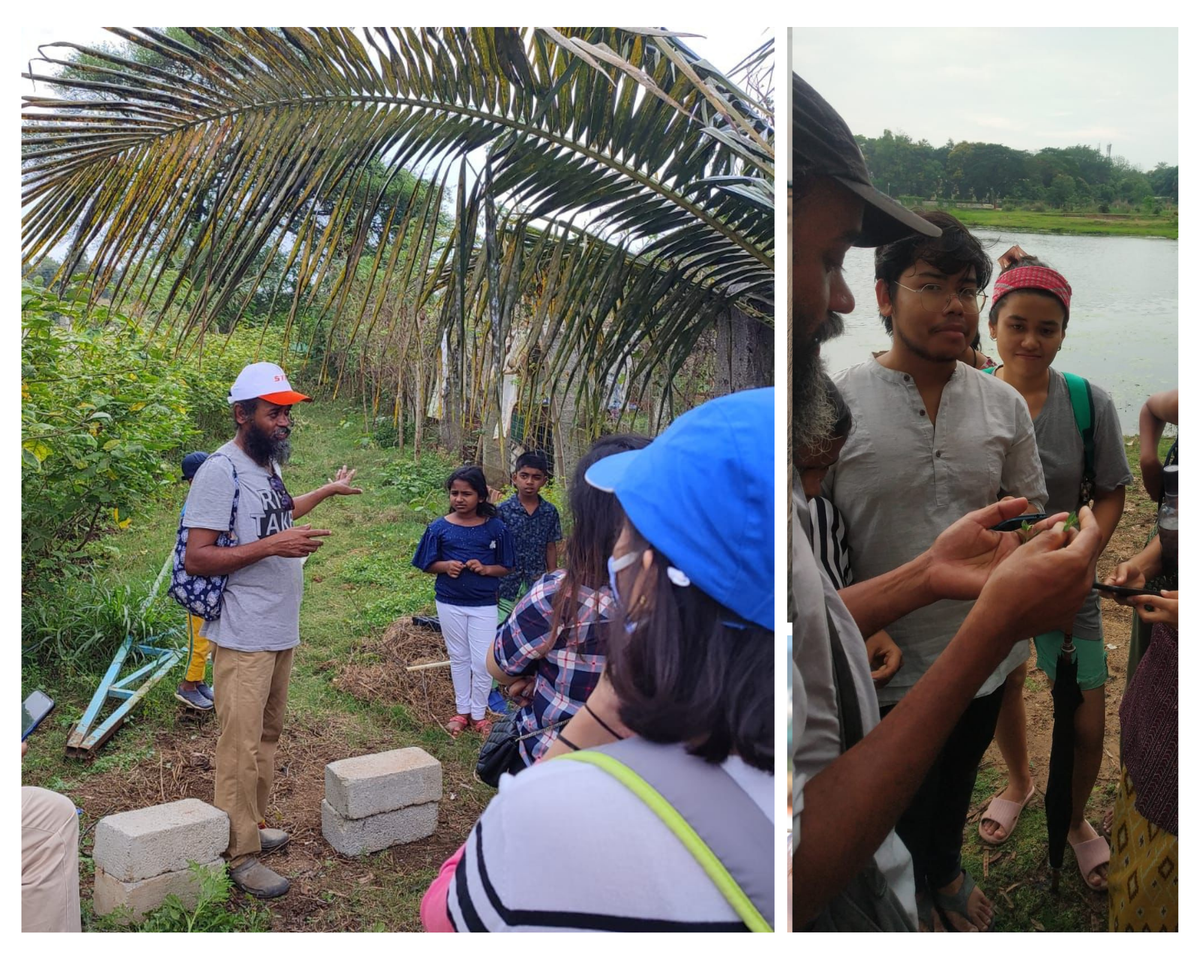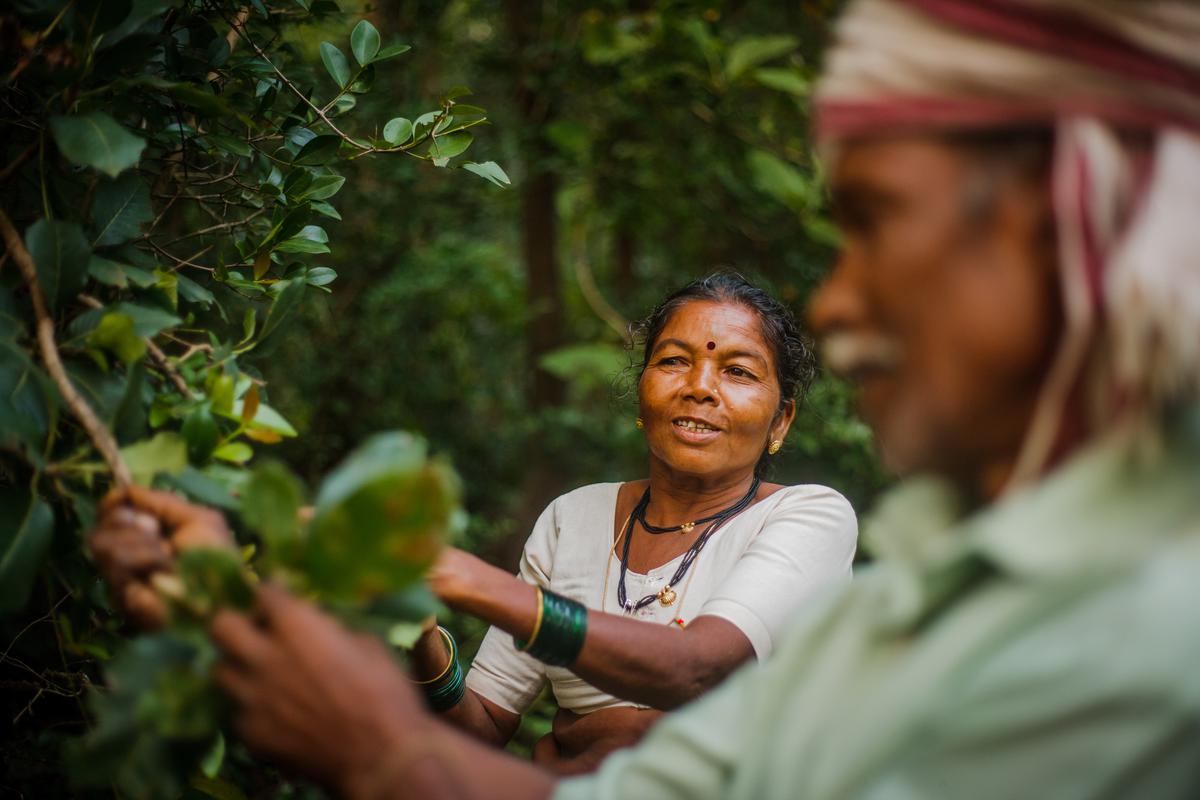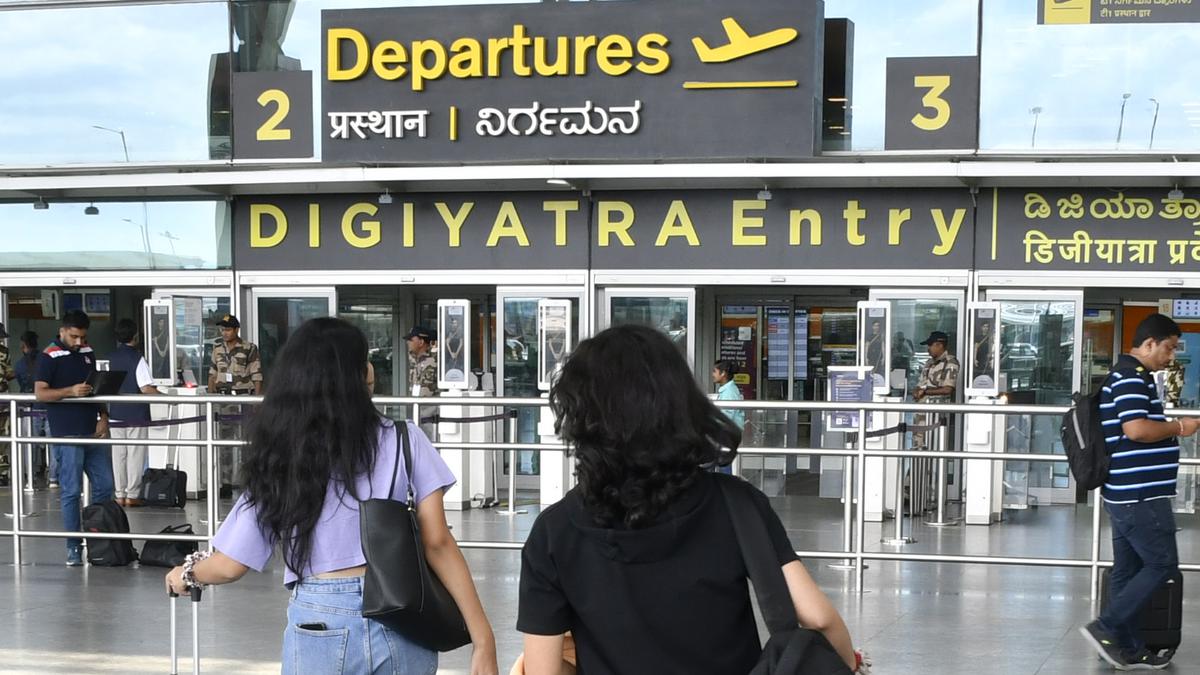As monsoons lash the land, weeds and wild plants are thriving. Meet the people who can help identify what you can add to your next Sunday lunch menu
As monsoons lash the land, weeds and wild plants are thriving. Meet the people who can help identify what you can add to your next Sunday lunch menu
Foraging is not a new concept. Indigenous communities across the world have always gathered wild plants, berries, and other edibles. In Odisha, for instance, among the Kondh community, a typical meal would consist of grains, wild onions, mushrooms and greens such as gondri saag, all foraged from the surrounding forests. The Khasi community in Meghalaya gather wild mushrooms and edible greens (like jatira and jamyrdoh) for their meals and to sell in the local market.
Fruits foraged on a walk in the Sahyadris, in the north Konkan Western Ghats
| Photo Credit: Sanjiv Valsan
We aren’t strangers to it either, in cities — I remember picking up ripe jamuns that had fallen off trees in Delhi, and bunches of kalmi saag or water spinach, and kochu pata or colocasia that grow around water bodies in Kolkata.) In the last few years, a growing number of people is embracing urban foraging. You will find foraging walks in almost every metro city in India. While some gather produce, others use the walks to connect the younger generation to traditional food systems.
The monsoons are a great time to forage, and what people eat and forage for during this season differs across India. “In Bengal, for example, people avoid eating greens, but in Tamil Nadu, greens like amaranth or gotu-kola [centella asiatica, with detoxing properties] are consumed,” says Nina Sengupta, an ecologist based out of Auroville who conducts edible weeds walks on weekends. But what all expert foragers agree is that you need time, patience, and lots of training to do it right — because you could confuse something poisonous with one that’s edible. We speak to four foragers who are helping people ‘eat the wild’.

Savita Uday
| Photo Credit: BuDa Folklore
Savita Uday
Founder, BuDa Folklore
Come monsoon, in August, you will find crowds of urban school children in the middle of Angadibail forest in Uttar Kannada (North Karnataka), taking part in the Mungaru events that celebrate the rains. Foraging walks will be a big part, as “the forest at Mungaru has so much to offer”, explains Uday, who started the organisation in 2006 to conserve the rich biodiversity and folk tales of the indigenous people of Uttar Kannada.
Foraged edible wild plants
| Photo Credit: BuDa Folklore
“For instance, we forage for kusumale hannu, a wild flower that is used in making a type of tambooli [a digestif drink]. The berries taste like apples. There’s also moor dharekai, a wild fruit, that’s used as an urad dal substitute for dosa. When ground into a paste, it resembles the mucilaginous structure of ground black gram.”
Each season has its own variety of edibles. In winter, they forage for tubers and roots, and in summer, wild fruits and berries. “nature has already created a food chart for us to follow,” she says, adding that during the monsoons soppu (tender leaves) are plentiful. “We held a wild colocasia leaves festival once in the village, where we documented more than 10 varieties, including one that grows on trees. They are rare and grow on old trees, so you have to climb to forage. We made the best patrode with these leaves.”
They also have ‘Live and Learn’ programmes, where every meal is cooked with foraged ingredients. budafolklore.in

Shruti Tharayil
| Photo Credit: Forgotten Greens
Shruti Tharayil
Founder, Forgotten Greens
Tharayil became interested in wild, edible plants when she was documenting the work of adivasi women farmers in Telangana in 2011. She noticed they used wild greens that she had always regarded as poisonous. Her interest led her to research it — talking to the people, and reading books. In 2018, back in Kozhikode, Kerala, she started Forgotten Greens, to generate awareness about edible but ‘lost’ plants that were once part of our diet. Today, apart from Kerala, Tharayil has hosted workshops on wild foods in places like Udaipur and Chennai. She also conducts an online workshop called Rewild Your Life, where she shares information and recipes about one plant every day.

Among the wild edibles that Tharayil has documented is stinging nettles that sprout soon after the first rains. “High in protein, minerals, and vitamins [A and C in particular], nettles were traditionally a part of our diet,” she says. “The leaves are often used in patthila, which is cooked during monsoons or karkidakam masam [when the community consumes different kinds of medicinal herbs].” Patthila thoran, which literally translates to ‘ten leaves’, is cooked with foraged greens and a garnish of coconut. “The recipe differs according to the greens available in the backyard and the knowledge of the forager,” she says.
@forgottengreens on Instagram

Nina Sengupta
| Photo Credit: Trupti Kedari
Nina Sengupta
Ecologist. Hosts Edible Weed Walk
Sengupta travels the world as an independent consultant integrating biodiversity conservation and sustainable development options. She conducts edible weed walks, hosts podcasts, and runs a YouTube channel, Edible Weed Walk, where she offers useful tips on urban foraging. (She advises beginners to visit the vegetable markets in their cities “where you will often find elderly women selling wild greens that they forage for themselves”.)
Sengupta believes that people should not view foraging in isolation. “People think in such flat terms: is it edible/medicinal, is a plant/weed useful? These are words of disconnect. People do not ask what the plant is? I try to explain that all of it — edible, non-edible — is a community, an ecosystem. The plant/weed you need is dependent for its existence on the ones you want to ‘weed out’.”

Foraging walks can help bridge the disconnection from the land, she says. “Right now, I am wearing a pair of trousers that is naturally printed with leaves,” she tells me. “The woman who made this foud a new perspective for her venture after coming on a weed walk with me. She now uses leaves for natural prints. I like that. It shows you are connecting integrally to your surroundings.”
The monsoon brings with it greens such as amaranth (with cooling properties) and red-pea eggplant (Solanum trilobatum). “The stem and leaves [of the latter] are thorny, but when you cook the leaves, the thorns melt away. It is added to rasams or made into a bhajji,” she says, explaining that people in Tamil Nadu eat greens that are cooling and bitter during the rains. Like gongura or roselle, whose fresh leaves are available now.

Suresh Kumar G
| Photo Credit: Sarjapur Curries
Suresh Kumar G
Founder, Sarjapur Curries
Searching for wild foods can mean discovering fresh or forgotten tastes — artist Suresh Kumar has memories of dishes that his mother and aunts cooked with edible weeds. The College of Art (New Delhi) alumnus started Sarjapur Curries in 2019 as a community garden to revive edible weeds and local greens through workshops, walks, and meet-ups of urban gardeners. The project has helped village communities revive over 15 kinds of edible weeds and more than six types of wild plants such as kuppakku and komeakku. He has also set up a seed bank that preserves around 25 different kinds of edible weeds, including komme akku (hogweed), gonakku (regular purslane), and pullsakku (oxalis).

Suresh Kumar leading a foraging walk
| Photo Credit: Sarjapur Curries
The idea is not just to bring back the plants, but also old and lost recipes that used them. For example, with the monsoon season, there will be a prevalence of anne soppu (water spinach) growing wild. People make a simple stir-fry with it or add it to lentils for a bassaru (a dal and greens dish). “ Bassaru or bas saaru is a very popular gravy recipe from Karnataka served as an accompaniment with ragimudde [ragi balls] or rice in Bangalore, Mysore, Mandya, Hassan, Tumkur, and Kolar region of Karnataka.”
@sarjapura_curries on Instagram

Bharat Mansata
Co-founder, Vanvadi
Vanvadi, a forest collective in the foothills of the Sahyadris in the north Konkan Western Ghats, has been hosting forest foraging walks almost every year since 2012. These usually take place over the last weekend of June or the first weekend of July — as early monsoon is when they have the maximum availability of wild, uncultivated foods. The walks (about two hours each) are generally conducted by the elderly adivasi women of the region. A translator (English/Hindi) is provided for those who do not follow Marathi. Meals include the foods collected during the walk.

Vanvadi’s foraging walks are generally conducted by the elderly adivasi women of the region
| Photo Credit: Sanjiv Valsan
“At Vanvadi, a primary listing yielded over 120 forest species known to have various traditional uses. Apart from edible species, we discovered we had more than 45 species with known medicinal use and at least 20 timber species. Then there are the plants that yield natural dyes, edible oils, gums and resins, botanical pesticides, etc., apart from fodder, bio-fuel, hedge protection, and craft material. Many species have multiple uses. For example, the leaves of the mahua tree provide fodder, the flowers are used to make jaggery, liquor or porridge, and the fruits are eaten or cooked as a vegetable. The seeds are crushed and oil extracted [The residue is valuable manure for farm crops],” says Mansata. “During the rains, we gather shevla [dragon stalk yam], kartula [spiny gourd], and berries such as karvanda [black currants].”
vanvadi.org






